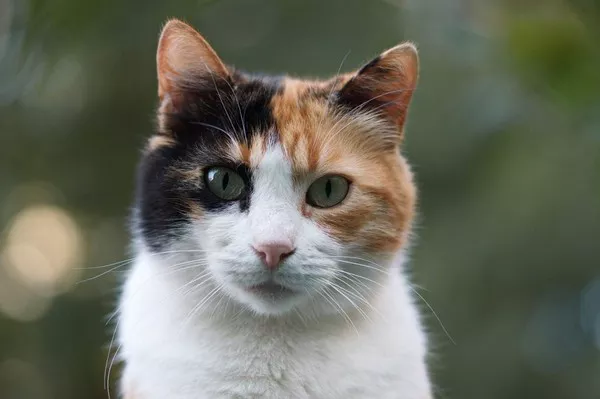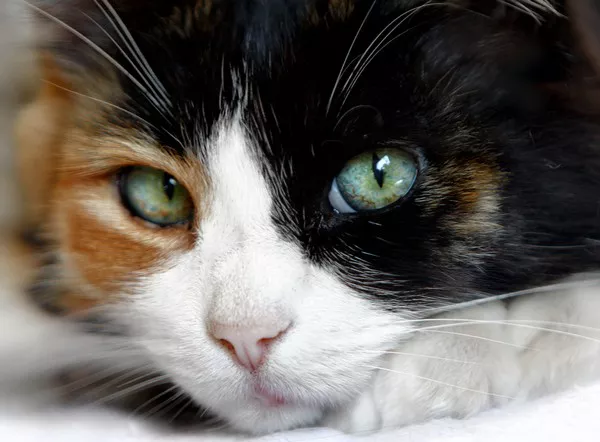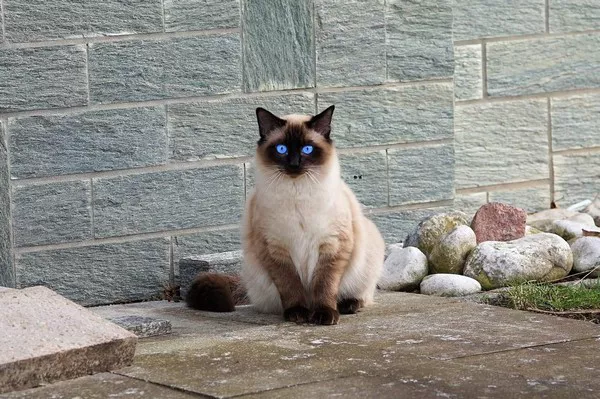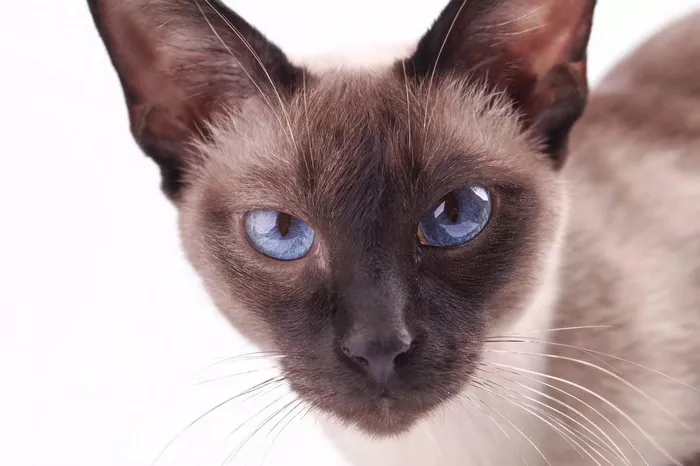Calico cats are known for their striking tri-color coats and unique personalities. While their fur pattern does not affect their nutritional needs, providing the right diet is crucial for their overall health and well-being. This article will explore what food to feed a calico cat, considering their dietary requirements, the benefits of different types of cat food, common dietary issues, and practical feeding tips.
Understanding Calico Cats and Their Nutritional Needs
What Makes Calico Cats Unique?
Calico cats are not a specific breed but rather a color pattern that can appear in various breeds. The term “calico” refers to cats with a coat that typically includes white, black, and orange patches. Most calico cats are female due to the genetic basis of their coloration, which is linked to the X chromosome. Despite their unique appearance, calico cats have the same nutritional needs as other cats.
Basic Nutritional Requirements
Cats are obligate carnivores, meaning their diet must primarily consist of meat. Their nutritional needs include:
Protein: Essential for growth, muscle maintenance, and overall health. High-quality animal proteins are crucial.
Fats: Provide energy and support healthy skin and coat. Omega-3 and omega-6 fatty acids are particularly important.
Vitamins and Minerals: Necessary for various bodily functions. Important vitamins and minerals include taurine, vitamin A, vitamin D, calcium, and phosphorus.
Water: Proper hydration is vital for kidney function and overall health.
Types of Cat Food
Dry Cat Food
Dry cat food, or kibble, is a popular choice due to its convenience and long shelf life. High-quality dry foods can provide balanced nutrition if they contain high levels of animal protein and are free from excessive fillers.
Pros:
Convenient and easy to store.
Can help with dental health by reducing plaque buildup.
Typically less expensive than wet food.
Cons:
Lower moisture content can contribute to dehydration if not supplemented with water intake.
Some brands may contain high levels of carbohydrates and fillers.
Wet Cat Food
Wet cat food, available in cans or pouches, has a higher moisture content, which can help with hydration. It is often more palatable to cats and can be an excellent source of protein and other nutrients.
Pros:
Higher moisture content helps maintain hydration.
Often more appealing to cats, encouraging better intake.
Generally higher in animal protein and lower in carbohydrates.
Cons:
More expensive than dry food.
Requires refrigeration after opening.
Raw Diets
Some cat owners choose to feed their pets raw diets, which consist of uncooked meat, bones, and organs. Proponents of raw diets believe they more closely mimic a cat’s natural diet.
Pros:
High in protein and moisture, closely resembling a natural diet.
Can improve coat quality and energy levels.
Cons:
Risk of bacterial contamination if not handled properly.
Requires careful planning to ensure nutritional balance.
Can be more expensive and time-consuming to prepare.
Homemade Diets
Homemade diets allow owners to control exactly what their cats eat, potentially improving the quality of ingredients. However, creating a nutritionally complete homemade diet requires extensive knowledge and careful planning.
Pros:
Complete control over ingredients and quality.
Can cater to specific dietary needs or allergies.
Cons:
Time-consuming and requires extensive nutritional knowledge.
Risk of nutritional imbalances if not properly formulated.
Selecting the Best Food for Your Calico Cat
Considering Life Stage
A cat’s nutritional needs change throughout its life. It’s essential to choose food that matches your calico cat‘s life stage:
Kittens: Require high protein and calorie-dense food to support rapid growth and development.
Adults: Need balanced nutrition to maintain health and activity levels.
Seniors: May benefit from diets lower in calories but higher in fiber and specific nutrients to support aging bodies.
Health Considerations
Weight Management
Obesity is a common issue in cats and can lead to various health problems. Choose foods that provide balanced nutrition without excessive calories. Portion control and regular exercise are also crucial.
Dental Health
Dry food can help reduce plaque buildup, but it shouldn’t be the sole method of dental care. Regular dental check-ups and teeth cleaning are important.
Allergies and Sensitivities
Some cats may have food allergies or sensitivities. Symptoms include vomiting, diarrhea, and skin issues. Identifying and eliminating the offending ingredient(s) from their diet is necessary. Hypoallergenic diets or limited ingredient diets can be helpful.
Hydration
Many cats do not drink enough water, leading to urinary tract issues. Wet food can significantly increase water intake, but always ensure fresh water is available.
Common Dietary Issues in Calico Cats
Obesity
Calico cats, like any other, can become overweight if they consume more calories than they burn. Obesity increases the risk of diabetes, arthritis, and other health problems. Monitoring portion sizes, encouraging exercise, and choosing low-calorie foods can help manage weight.
Urinary Tract Health
Cats are prone to urinary tract issues, especially if they are not well-hydrated. Feeding wet food and ensuring access to clean water can help prevent urinary tract infections and other related problems.
Digestive Issues
Some cats may experience digestive issues such as vomiting or diarrhea due to dietary changes or food intolerances. Gradually transitioning to new foods and choosing easily digestible formulas can minimize these problems.
Essential Nutrients for Calico Cats
Taurine
Taurine is an amino acid essential for heart function, vision, and reproduction in cats. Since cats cannot produce taurine in sufficient quantities, it must be included in their diet through animal-based proteins.
Omega-3 and Omega-6 Fatty Acids
These essential fatty acids support skin and coat health, reduce inflammation, and promote overall well-being. Sources include fish oil, flaxseed oil, and certain meats.
Vitamins and Minerals
Cats require a range of vitamins and minerals for optimal health. Key vitamins include A, D, E, and K, while important minerals include calcium, phosphorus, and magnesium. Balanced commercial cat foods typically provide these nutrients, but supplements may be necessary for homemade diets.
Feeding Tips for Calico Cats
Establish a Feeding Routine
Consistency is key to maintaining a healthy diet for your calico cat. Establish a regular feeding schedule with set meal times. This helps prevent overeating and allows you to monitor your cat’s appetite and overall health.
Portion Control
Avoid free-feeding (leaving food out all day) as it can lead to overeating and obesity. Measure out appropriate portion sizes based on your cat’s weight, age, and activity level. Follow the feeding guidelines provided by the food manufacturer or consult your veterinarian for personalized recommendations.
Monitor Your Cat’s Weight and Health
Regularly weigh your calico cat and monitor their overall condition. Look for signs of weight gain, loss, or any changes in behavior that might indicate health issues. Regular veterinary check-ups are essential for maintaining your cat’s health and addressing any dietary concerns.
Transitioning to New Foods
If you need to change your cat’s diet, do so gradually over 7-10 days to avoid digestive upset. Start by mixing a small amount of the new food with the old food, gradually increasing the proportion of the new food while decreasing the old food.
Treats and Snacks
Treats should only make up a small portion of your cat’s daily caloric intake (no more than 10%). Choose healthy, low-calorie treats and avoid feeding table scraps or human food that may be harmful to cats.
Feeding Multiple Cats
If you have multiple cats, ensure that each cat receives the appropriate amount of food. This can be challenging in a multi-cat household where some cats may overeat while others may not get enough. Consider feeding cats in separate areas or using feeding stations designed to prevent food stealing.
Special Considerations for Senior Calico Cats
As cats age, their nutritional needs change. Senior cats may benefit from diets that are lower in calories but higher in fiber to maintain digestive health. Additionally, they may require increased levels of certain nutrients like antioxidants, glucosamine, and chondroitin to support joint health and overall vitality.
Homemade Diets: Proceed with Caution
If you choose to prepare homemade meals for your calico cat, it is crucial to consult with a veterinary nutritionist to ensure the diet is balanced and meets all nutritional requirements. Homemade diets must include appropriate proportions of proteins, fats, vitamins, and minerals to avoid deficiencies or excesses that could harm your cat’s health.
Conclusion
Feeding your calico cat a balanced and nutritious diet is essential for their health and well-being. Whether you choose dry food, wet food, raw diets, or homemade meals, it’s important to consider your cat’s life stage, health status, and individual preferences. Regular veterinary care, portion control, and a consistent feeding routine will help ensure your calico cat remains healthy and happy. By understanding their nutritional needs and making informed choices, you can provide your calico cat with the best possible diet for a long, vibrant life.

























